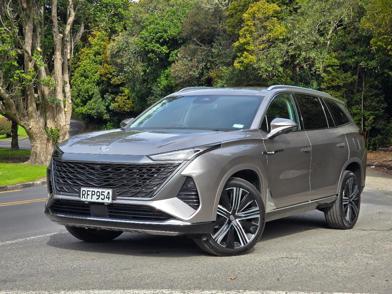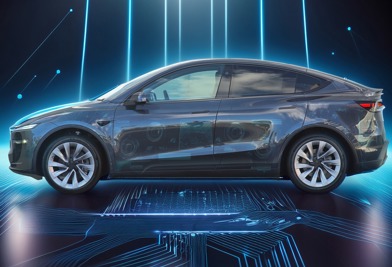Meet the cheapest plug-in hybrid vehicle (PHEV) you can buy in New Zealand: the $42,990 Chery Tiggo 7 Urban. As you can see, it’s not small: it’s a proper family-sized medium SUV. It doesn’t skimp on the electrified technology either, with a Chery Super Hybrid (CHS) powertrain that gives 90km zero-emissions driving (WLTP) and a combined range well in excess of 1000km.
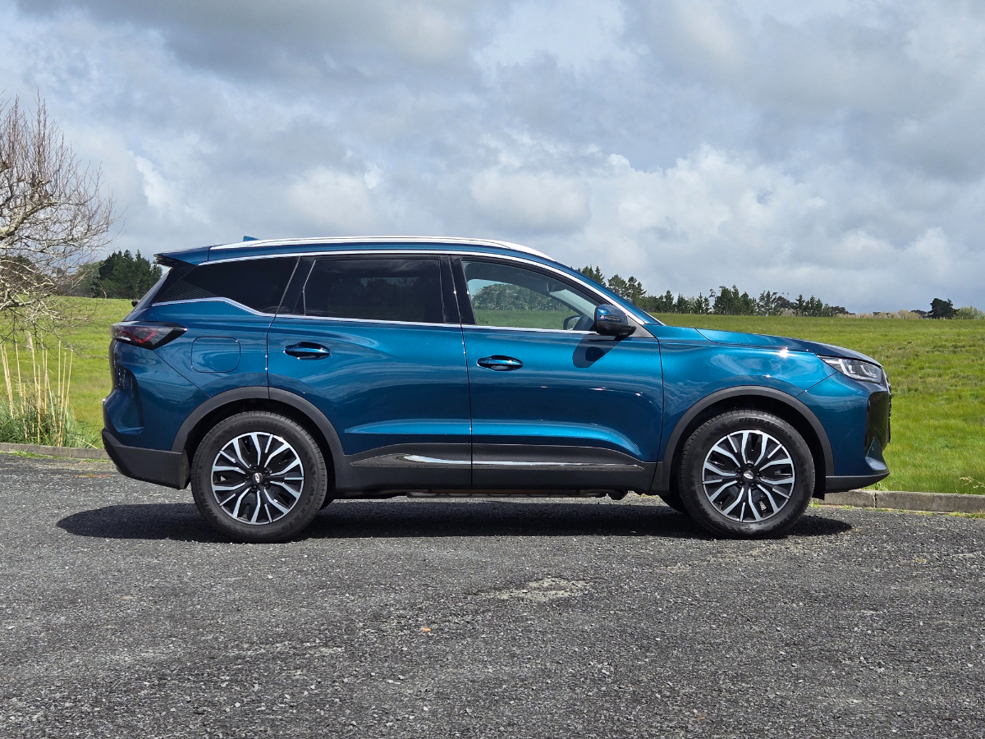
Actually, that’s not quite the one we’re meeting. The Urban is the one we wanted to show you, thanks to that headline price. But best-laid plans and all that; when we showed up to collect the Tiggo 7 Urban for our review, somebody had absconded with it. So this is the Ultimate version, which is $46,990 and not quite the next-cheapest PHEV on the market, because it’s a smidge more costly than the Mitsubishi Eclipse Cross PHEV and Geely Starray.
But bear with us, because Urban and Ultimate are mechanically identical, right down to wheel and tyre sizes.
They don’t look too different, either; what you’re getting for an extra $4k in the Ultimate is heated/vented front seats with memory function for the driver, an upgraded Sony sound system, wireless phone charger, puddle lights, privacy glass, the full 360-degree camera system (Urban has a single-view reversing camera) and fancier machined finish on those 18-inch alloys.
The Super Hybrid powertrain is the key selling point of the Tiggo 7. It’s called CHS but it’s exactly the same as the Super Hybrid System (SHS) used in the Jaecoo J7; they’re both Chery products, just with different grille badges.
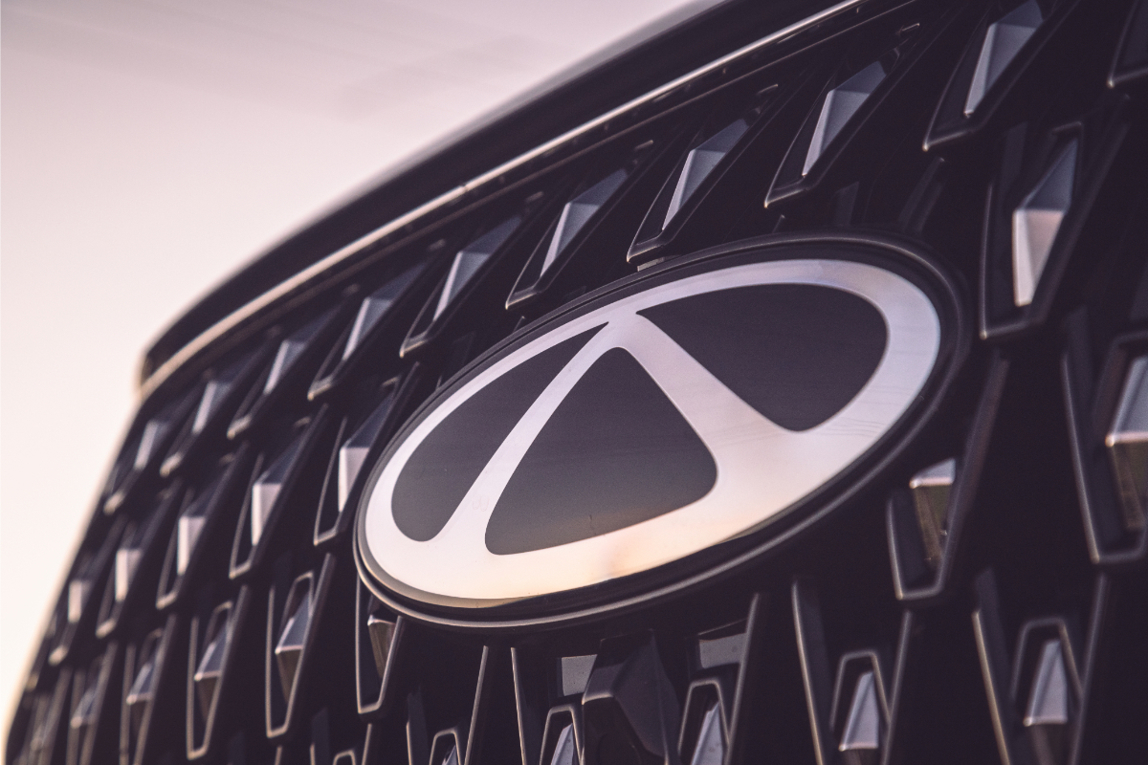
Fun fact: a version of the Jaecoo J7 SHS is actually sold in China as the Chery Tiggo 7 High Energy. But we digress.
The Chery Tiggo 7 Urban is the one we wanted to show you, thanks to a headline price. But best-laid plans and all that.
CHS combines a 1.5-litre engine with a large 18.4kWh battery and single electric motor. As is the way with super/ultra hybrids, the focus is on electric power and the petrol engine is mainly there to generate electricity, although it can also drive the wheels above 80km/h if needed.
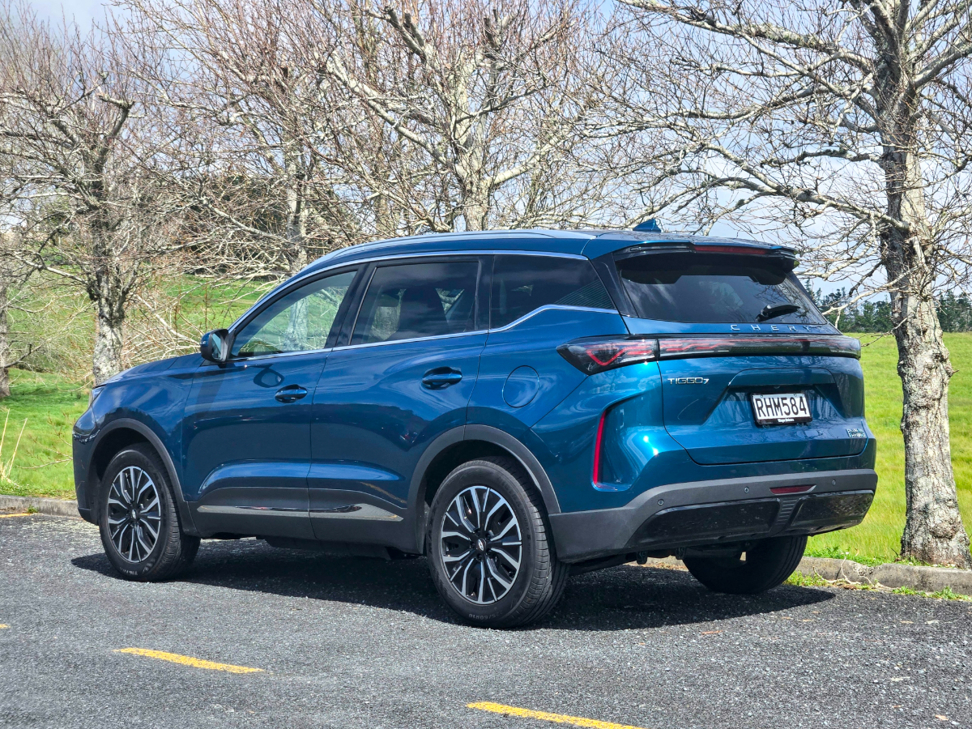
It’s a high level of technology for what’s essentially a budget vehicle. As you’d expect, it’s smooth and refined in normal running, because it’s mostly an EV. More importantly for this family SUV, it can also be astonishingly cheap to run, assuming you’re maximising what the Super Hybrid powertrain has to offer.
The Tiggo 7 aims to give you a very EV-like driving experience in general. There’s no start/stop button or handbrake; just sit in the driver’s seat and it’s ready to go.
That means keeping it charged up. The petrol engine is more than capable of powering-up the battery as you drive; you can “force” (that’s what the infotainment menu calls it) charge anywhere up to 80%. But that comes at a cost to fuel consumption of course.
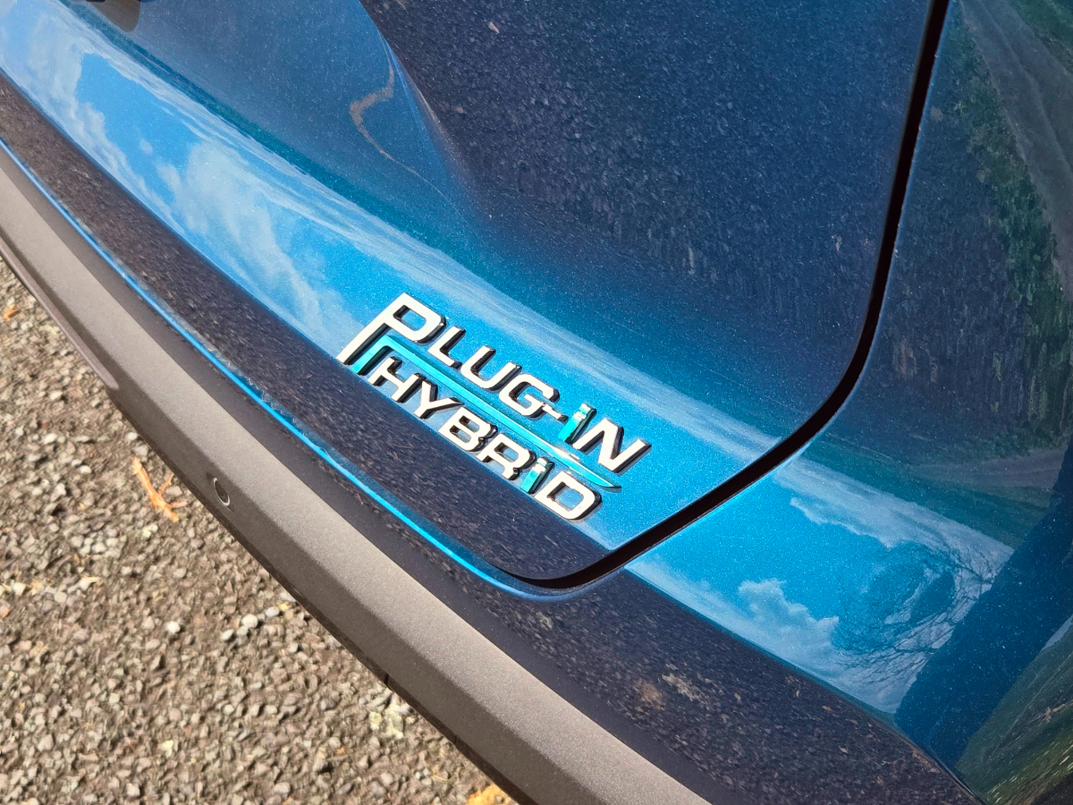
Better to plug in as much as you can, especially when you can achieve up to 90km EV driving. You can do that at home overnight (up to 9 hours on a 3-pin or less than 3 hours on a typical AC wallbox), but the Tiggo 7 can also accept DC fast-charge at a public station like a full EV - although that’s more expensive, obviously. Still cheaper than petrol.
How you expect your budget family SUV to go around corners? If the answer is 'at sensible speeds and I’m not doing track days', then this is fine.
The Tiggo 7 aims to give you a very EV-like driving experience in general. There’s no start/stop button or handbrake; just sit in the driver’s seat and it’s ready to go. It does still have a conventional gear selector on the centre console, unlike the column-wand on the Jaecoo J7 SHS. Although rather like the J7, it’s annoyingly sluggish when shifting from Drive to Reverse. There are 3 levels of adjustable regen.
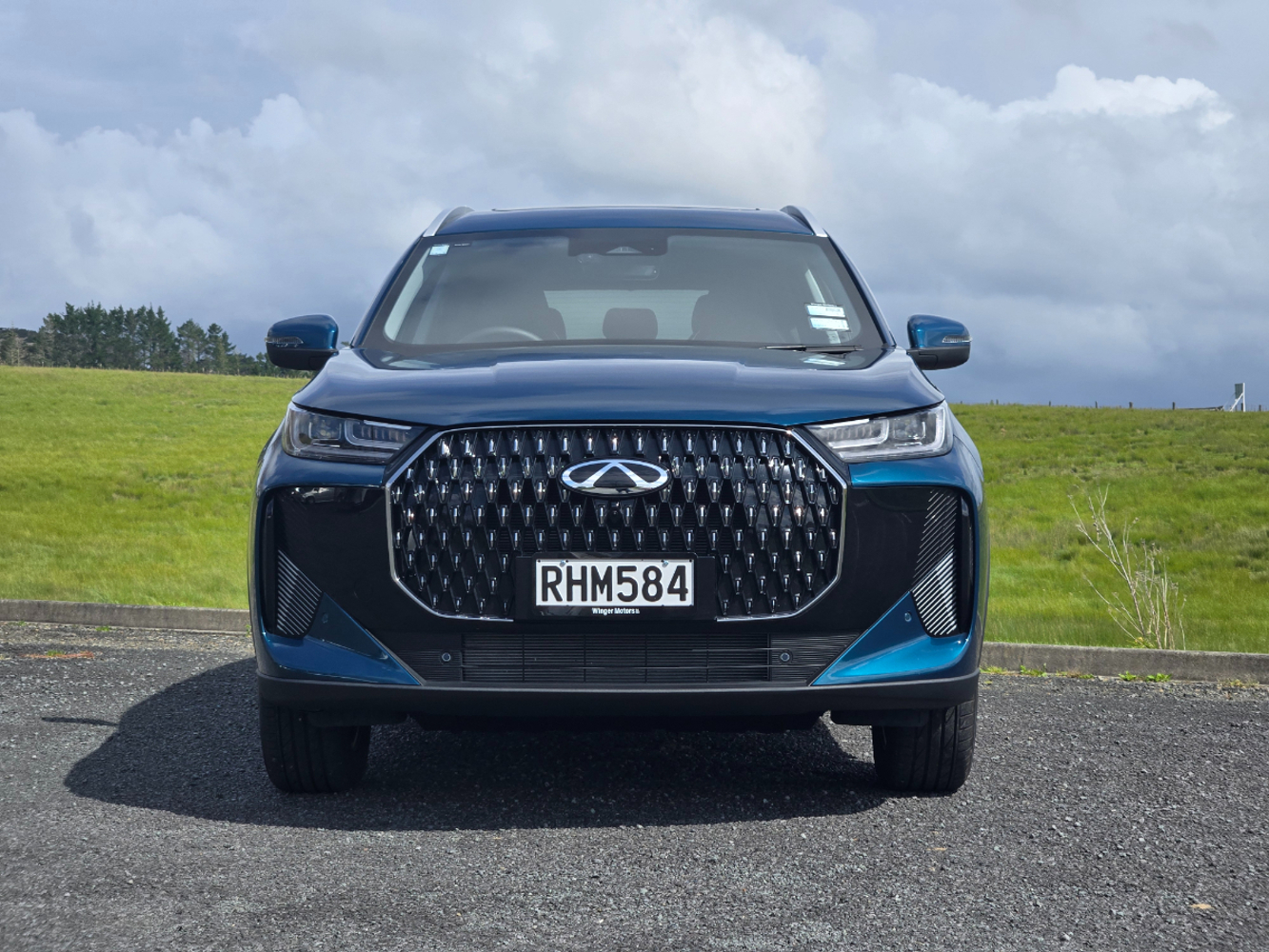
The Tiggo 7 is decently quick in a straight line, although ultimately performance depends on whether you’ve got one or both motors contributing. Because it’s FWD, it’s all too easy to squeal the Maxxis Victra Sport 5 tyres in town, either when taking off or making a sharp turn under power.
The driver assists need some work, but the Chery is not alone among new-gen cars in that. With adaptive cruise activated, the steering assistance can be jerky and the braking quite abrupt. The speed sign recognition often gets it wrong, too; reading 50km/h posted limits on off-ramps when you’re going straight-ahead on the motorway is a regular occurence.
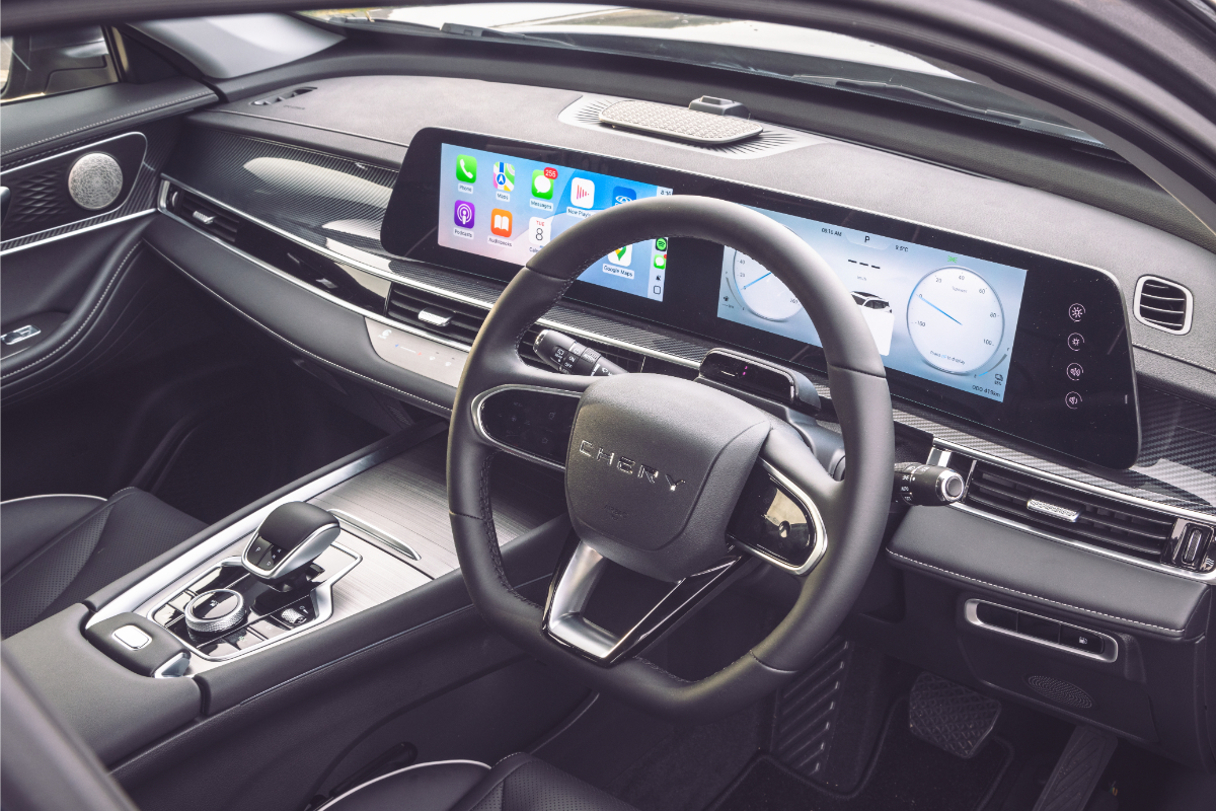
It all results in a lot of binging and bonging and ultimately, you just stop taking notice of the warnings.
You can switch many of them off, and some even stay off. We found we could deactivate the lane departure alert permanently for example, but the driver distraction monitor turned itself back on when the car was restarted. However, there’s also a configurable screen shortcut for that and other functions: swipe down and you can deactivate with one click.
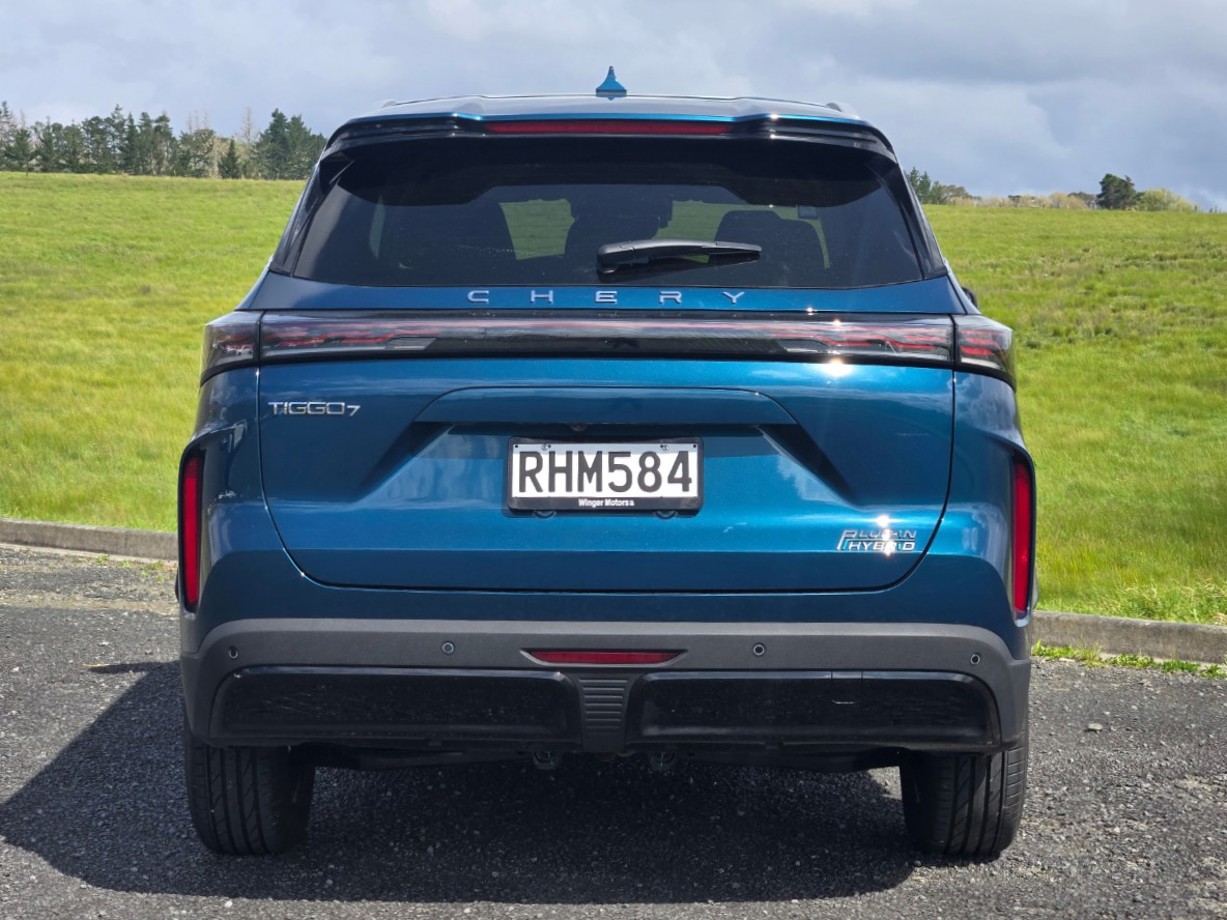
How does it handle? Well, to assess that we need to ask how you expect your budget family SUV to go around corners. If the answer is “at sensible speeds and I’m not doing track days”, then the Tiggo 7 is fine.
It understeers a lot, but in a progressive and predictable way. There’s steering rack rattle on bumpy roads and any attempt to press on is greeted with tyre squeal straight out of a 1970s cop show.
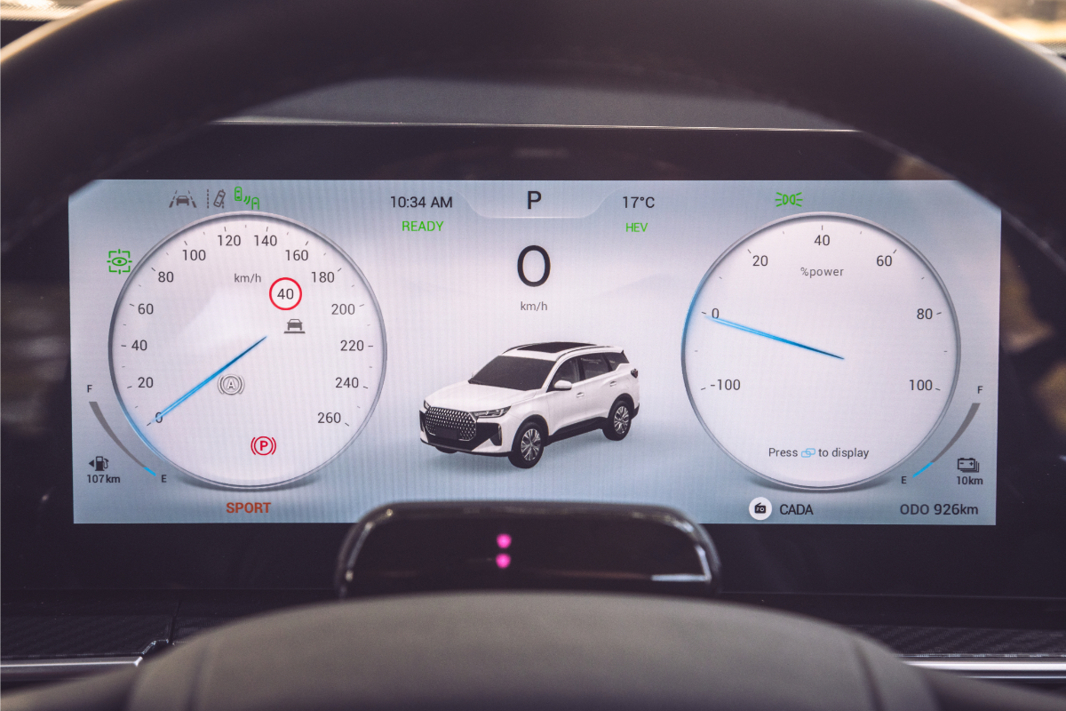
There’s a menu that allows you to adjust the steering “force” (Chery really likes that word) or match it up with the chosen drive mode, but there’s not much point because it offers so little communication.
Really, the dynamic package is… fine. And we know the basic engineering platform is solid, because it’s shared with so much else.
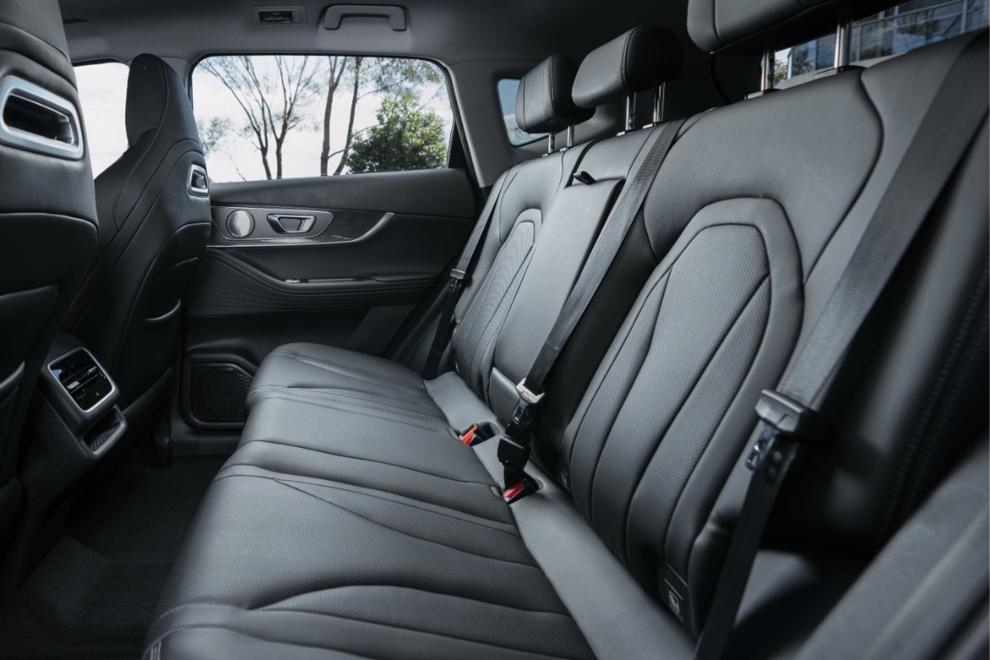
More suitable tyres could transform the Tiggo 7 in terms of steering and general handling demeanour. But as we said: it’s a budget family SUV built for comfort, not speed.
On that note, it’s impressively practical. It’s spacious front and rear and back-seat occupants get a decent view out; if you need more seating there's the related Tiggo 8, which has 3 rows. The Tiggo 7's 565-litre boot is generous for this segment, although you don’t quite get a flat load-through with the back seats folded.
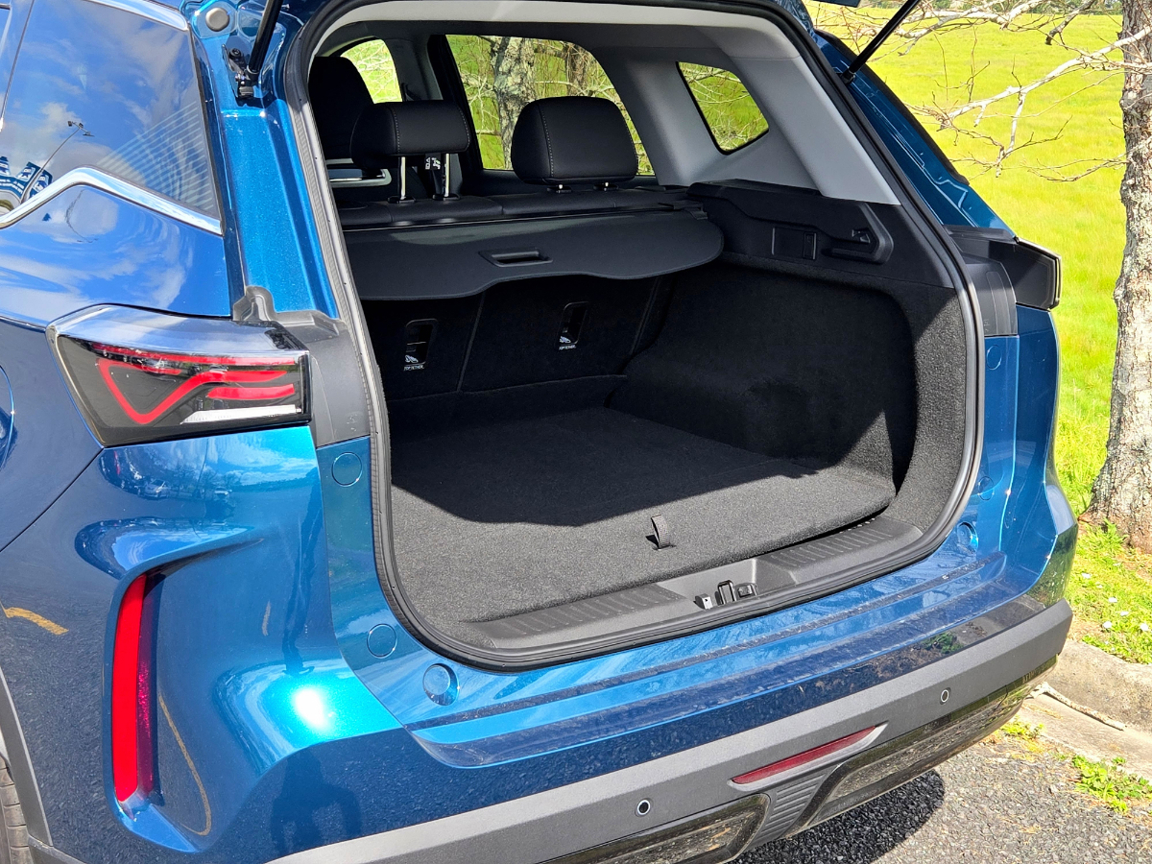
Cabin fit and finish is impressive for the price, although some of it looks better than it feels; Tiggo 7 has the seemingly obligatory icky-feeling “synthetic leather” that’s now so common in electrified cars. We’l take fabric any day, thanks.
The dual instrument and infotainment screens are well-positioned, although the former has the also-common affliction of tiny, tiny displays. Dynamic information like the adaptive cruise speed is presented in an incredibly small size and hard-to-read colour: searing green. But we like the little satellite touch controls on the driver’s side of the screen frame for brightness and audio.
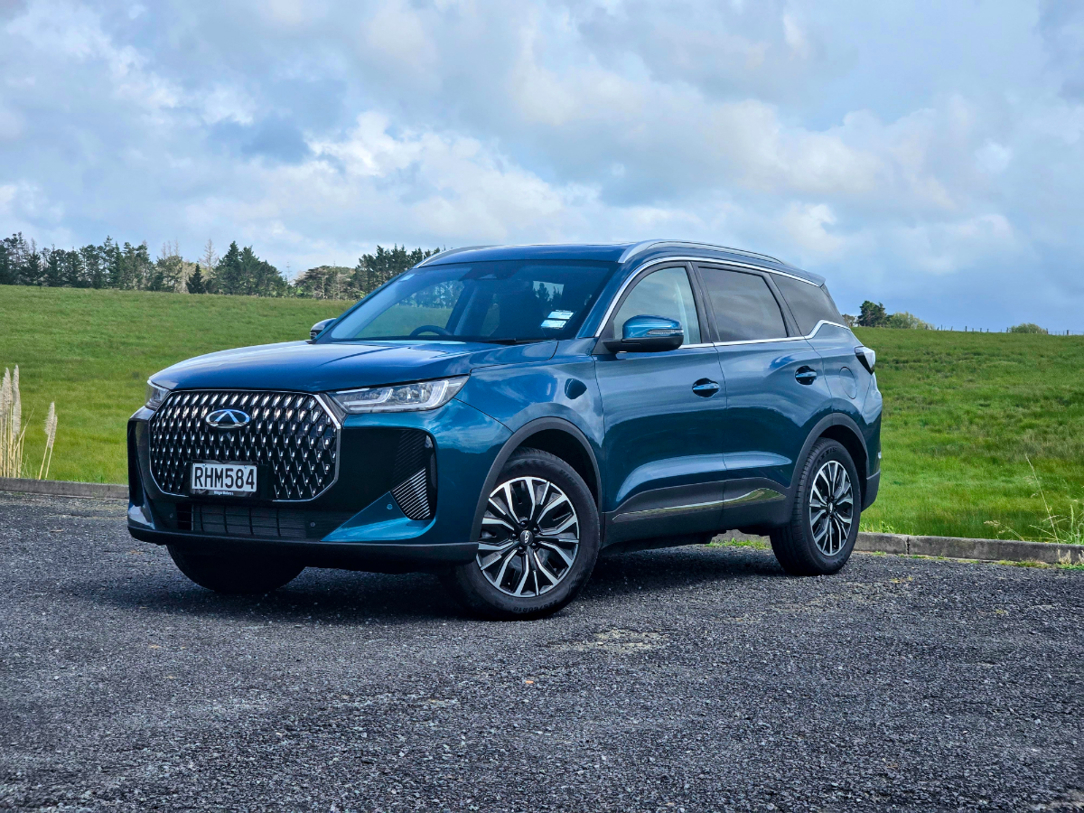
The major controls and switchgear are Mercedes-Benz-inspired, in layout, shape and colour. Executed pretty well, too. It certainly doesn’t feel cheap.
But the Tiggo 7 is cheap, and that’s the point. This car presents an incredibly high level of plug-in hybrid technology and efficiency at an incredibly low price, in a package that will really appeal to family buyers, especially when you factor in a 7-year unlimited-km warranty (8 years on the battery).
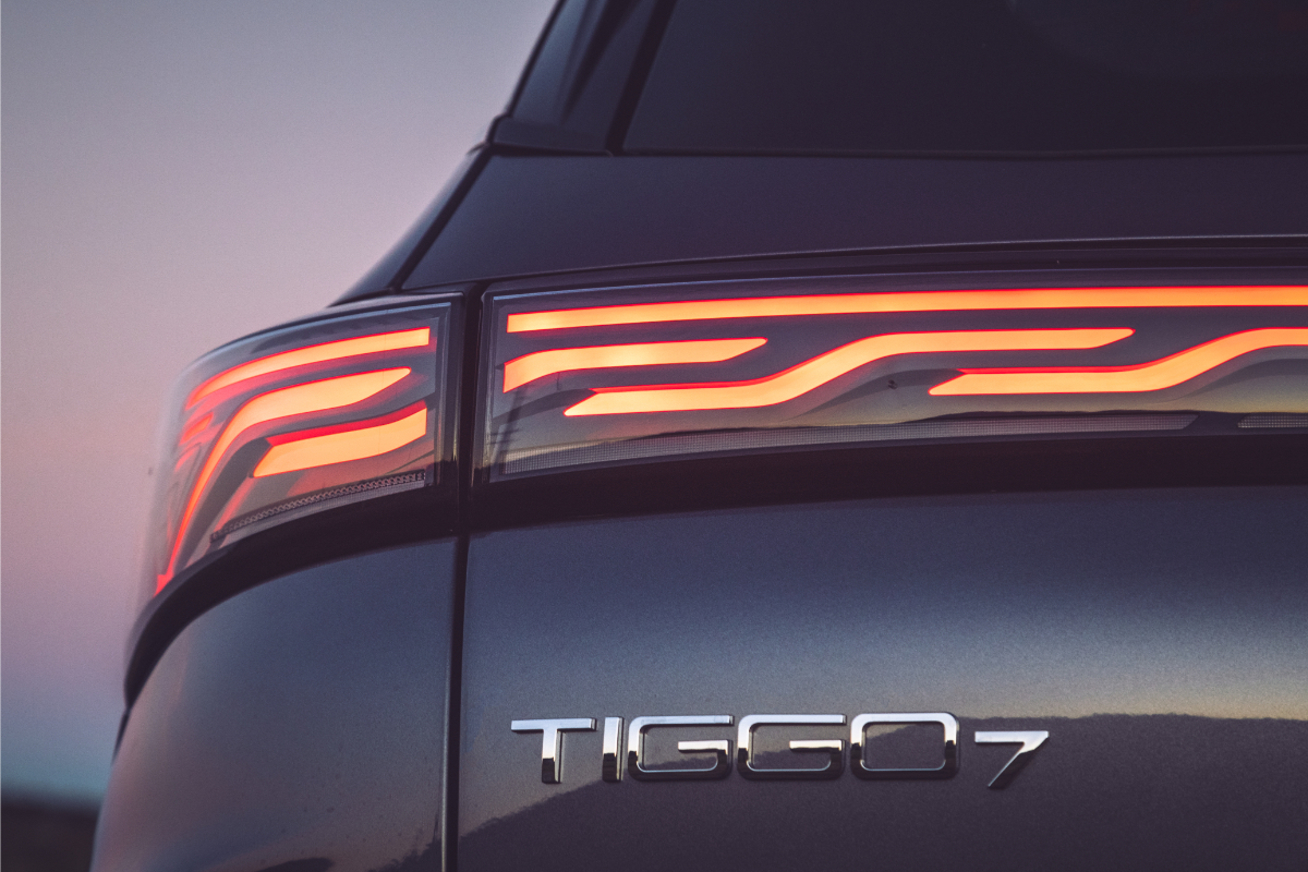
You can really see people stepping out of older SUVs and making the plunge into buying new for the first time here.
For that reason, the Tiggo 7’s lack of dynamic polish is forgivable. It presents an appealing ownership experience for buyers wanting a mix of value-for-money, practicality and low long-term running costs.
How much is the Chery Tiggo 7?
The entry-level Tiggo 7 Urban is NZ's cheapest plug-in hybrid at $42,990. Our test vehicle is the more lavishly equipped Ultimate, which costs $46,990.
What are the key statistics for the Chery Tiggo 7?
It pairs a 1.5-litre petrol engine (105kW/215Nm) with a single electric motor (150kW/310Nm) and 18.4kWh plug-in battery. Chery doesn't give a combined power output, but the electric figure is more relevant because the petrol engine mainly acts as a generator to keep the battery topped up.
Is the Chery Tiggo 7 efficient?
As with any PHEV, it depends how you use it. But if your weekly driving is less than (say) 500km and you're prepared to charge the Tiggo 7's battery every night, it'll be as cheap to run as a full EV because it boasts 90km range.
Is the Chery Tiggo 7 good to drive?
Performance and handling are not its forte. It's brisk, but the front wheels spin way too much, especially in the wet. The ride is comfortable but the handling falters quickly in anything but gentle driving.
Is the Chery Tiggo 7 practical?
It's a generously proportioned family SUV with great space front and rear, and a pretty decent boot, too. The rear seat is split 60/40 and while you don't get a completely flat load-through, there's a lot of usable space for larger loads.
What do we like about the Chery Tiggo 7?
You're getting a high level of hybrid technology and equipment for a budget price and there's genuine 80-90km EV range, making it potentially useful as a day-to-day EV and very cheap to run. It doesn't feel like a budget car inside and it's pretty good looking, in an inoffensive way.
What don’t we like about the Chery Tiggo 7?
Traction is poor once the Super Hybrid powertrain hits the front wheels, especially in the wet. Important graphics on the instrument panel are very hard to read (adaptive cruise speed, for example) and the driver assistance functions still need work for Kiwi roads.
What kind of person would the Chery Tiggo 7 suit?
A family SUV buyer who wants impressive hybrid technology for a budget price and sees the value in the Chery's 7-year, unlimited-kilometre warranty.























